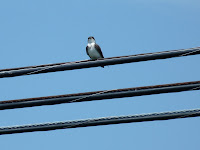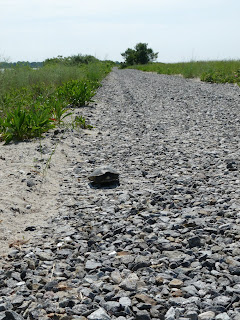
While the doctor who had examined her was not in, I was told she had been drooping both of her wings. She was not favoring one. Twan and I observed it unable to fly seemingly because of the right wing, though there was no obvious sign of trauma. That combined with the fact the tornadic thunderstorm had destroyed nearly every Osprey nest on Pleasure Beach and Long Beach a couple days before lead us to believe it was injured. Twan suggested yesterday that the storm could merely be a very strange coincidence. The bird may have ingested a toxin. The people at WiC feel the same. Further analysis is pending.
I was told the Osprey would be going for x-rays soon. Whether it was injury or toxin she is doing relatively well. The healthy meals she is being fed now while being watched over by experts in a safe and secure facility are clearly helping. She is far from out of the woods, but what I saw today combined with the fact she is even alive suggest a decent chance at living and returning to the wild. If she is rehabilitated and eligible for release we hope to be able to transport her back to the Pleasure Beach area. If we can do that, we will certainly publicize where and when so that all of you can witness the event. I very much hope that this can all come together. Once again, we will put out another update as soon as we get one.
Photo © Scott Kruitbosch

















































